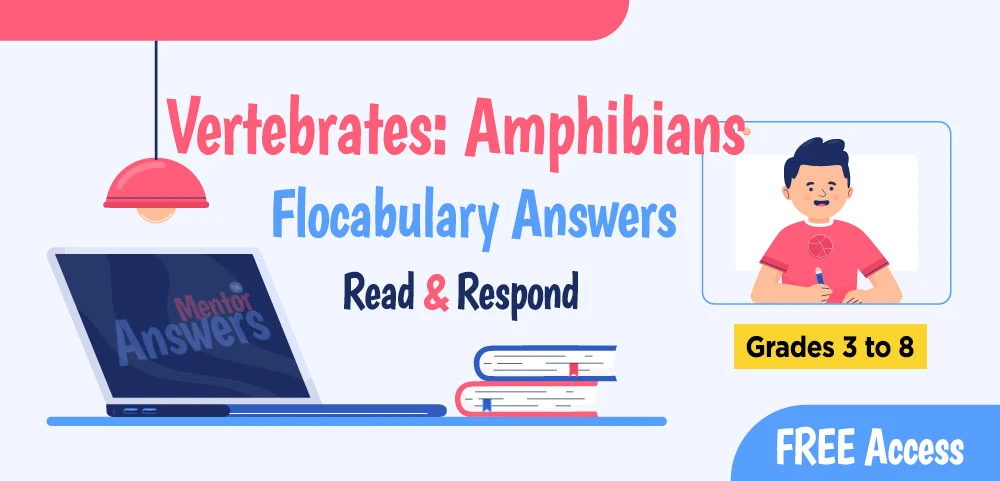Are you looking for a reliable source of answers for the Vertebrates: Amphibians Flocabulary Quiz, Read & Respond? You’ve come to the right place!
We have a team of teachers who have checked and verified the correct answers for all the questions. You can trust our expertise and save time by using our answers key.
Vertebrates: Amphibians Flocabulary Quiz Answers Key
- “frog”
- “living a double life”
- “salamander”
- “double-jointed”
- are cold-blooded
- have dry skin
- are warm-blooded
- have moist skin
- moist
- elevated
- cold
- underground
- Toad
- Frog
- Caecilian
- Salamander
- True
- False
- digging
- swimming
- leaping
- picking up bugs
- cell
- infant
- morph
- larva
- tadpole
- toad
- invertebrate
- newt
- feathers
- antennae
- eyes
- lungs
- True
- False
Vertebrates: Amphibians Flocabulary Read & Respond Answers
Expand your knowledge by exploring the Read & Respond answers related to the topic of our Subject:
- To keep their bodies from drying out
- To protect themselves from predators
- To keep their blood cool
- To avoid staying on land for too long
- Caecilians are not amphibians.
- Salamander tails allow them to burrow into soft dirt.
- The hind legs of frogs and toads have a specific purpose.
- Some amphibians fall into multiple groups.
- diet
- species
- body shape
- lifestyle
Are you interested in delving into additional subjects and Lessons related to Flocabulary? Check Here To Get All Flocabulary Answers Key.
If you have any questions or need more answers key for your favorite subject, please leave a comment below or contact us through our website. We would love to hear from you and assist you in your learning journey.

